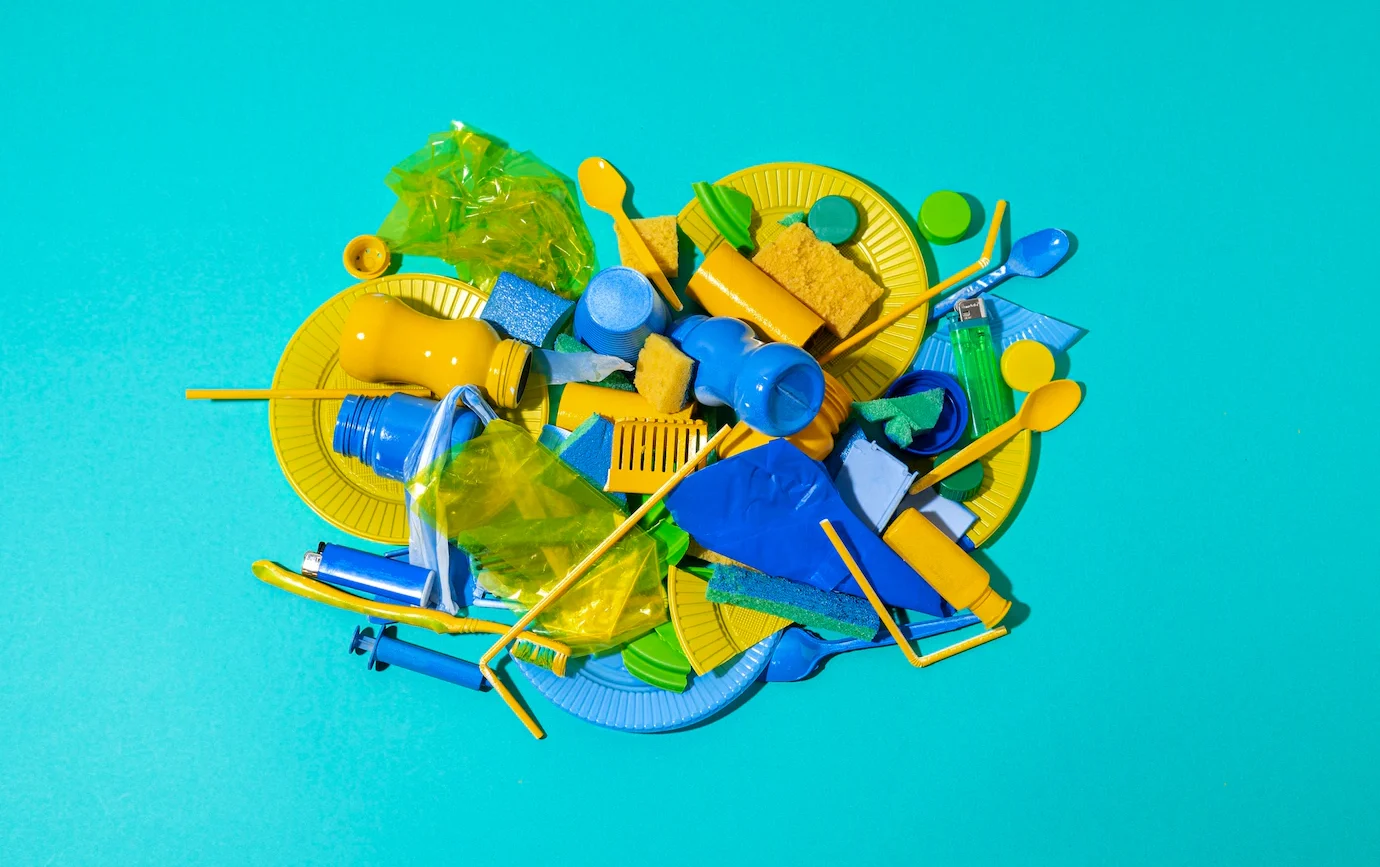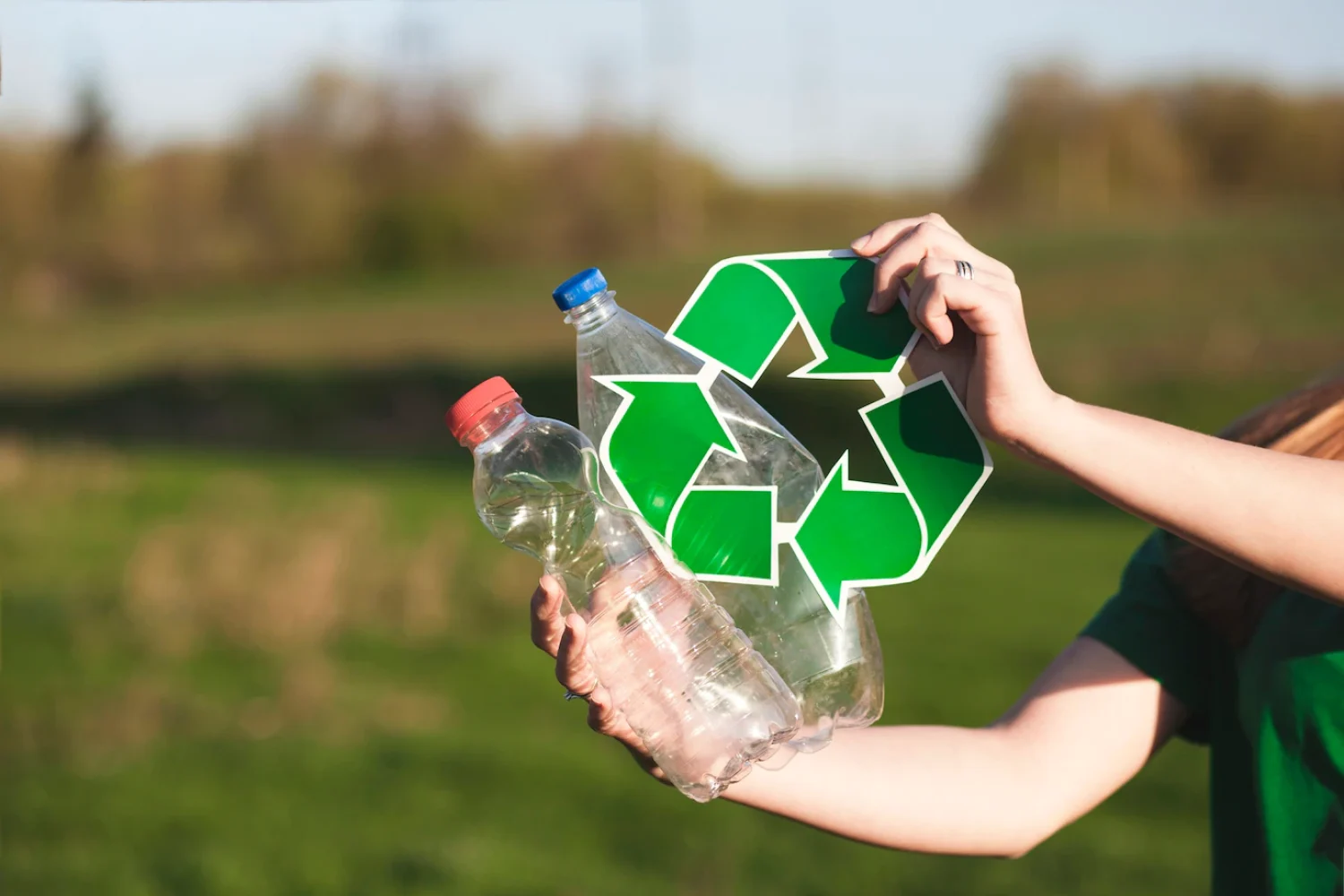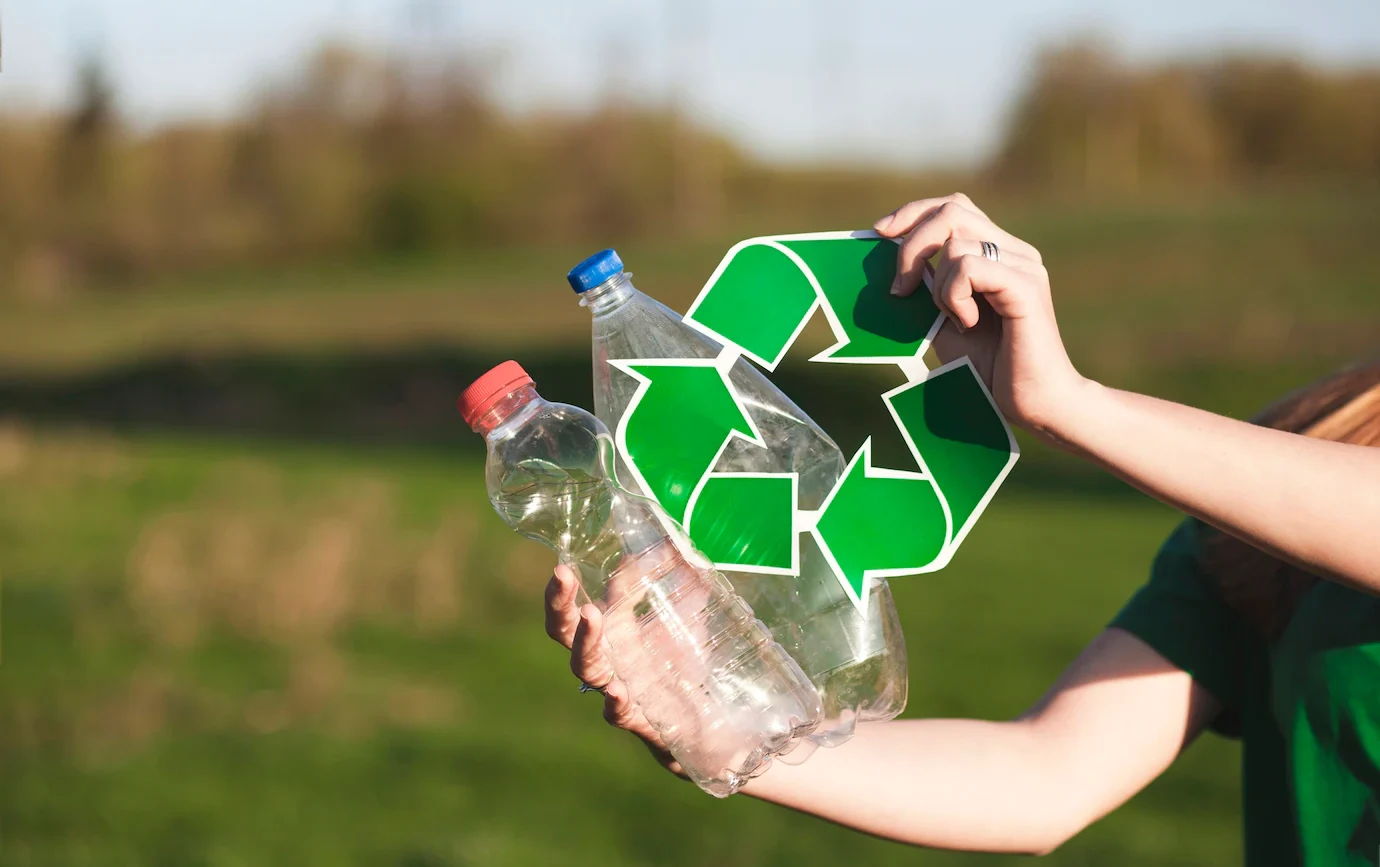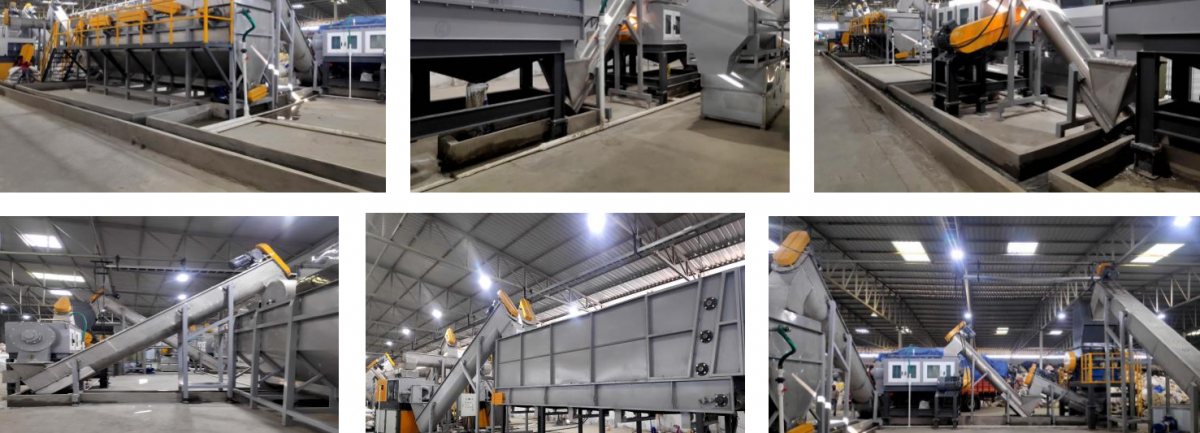Introduction
A. Definition of Plastic Recycling
Plastic recycling is the process of converting used or waste plastic into new, usable plastic products. It involves collecting, sorting, cleaning, and reprocessing plastic waste into new materials that can be used in a variety of applications.
B. Importance of Plastic Recycling
Plastic waste recycling is important for several reasons. First, it helps to reduce the amount of plastic waste that ends up in landfills and the environment, where it can cause serious harm to wildlife and ecosystems. Second, it conserves natural resources by reducing the need to extract new materials to make new plastic products. Third, it reduces greenhouse gas emissions by reducing the need to produce new plastic products.
C. Overview of the Plastic Recycling Process
The plastic waste recycling process can be broken down into several steps. First, plastic waste is collected and sorted by type of plastic. Next, the plastic is cleaned to remove any contaminants, such as food waste or dirt. Then, the plastic is shredded or granulated into small pieces, known as plastic pellets. These pellets can then be reprocessed into new plastic products using a variety of techniques, such as injection molding or extrusion. Finally, the recycled plastic is inspected and tested to ensure that it meets industry standards for quality and safety.
The recycling process may vary depending on the type of plastic, the recycling facility, and the end use of the recycled plastic. However, the above-mentioned steps are the common steps involved in plastic recycling.
- Related Article: Unveiling the Fascinating World of Plastic Recycling: How We Can Tackle Plastic Waste and Save the Planet
Types of Plastic Recycling

A. Mechanical Recycling
Mechanical recycling, also known as “conventional recycling,” is the process of converting plastic waste into new plastic products through a series of mechanical steps. This method involves the collection and sorting of plastic waste, followed by size reduction, washing, and pelletizing. The resulting plastic pellets can then be used to produce new products such as plastic bags, bottles, and containers.
Mechanical recycling is the most common type of plastic recycling and is suitable for a wide range of plastics, including polyethylene (PE), polypropylene (PP), and polystyrene (PS). The main advantage of this method is that it is relatively simple, low-cost, and can be easily integrated into existing recycling infrastructure. However, it is not suitable for all types of plastics, particularly those that are contaminated or have been heavily degraded.
B. Chemical Recycling
Chemical recycling involves the use of chemical processes to convert plastic waste into new materials, such as chemicals, fuels, or other products. This method can be used to recycle plastics that are not suitable for mechanical recycling, such as mixed plastics, contaminated plastics, or plastics with low molecular weight.
The most common chemical recycling methods include pyrolysis and gasification. Pyrolysis involves heating plastic waste in the absence of oxygen to create a liquid oil that can be used as a fuel or a feedstock for chemicals. Gasification involves heating plastic waste with a limited amount of oxygen to create a gas that can be used as a fuel or a feedstock for chemicals.
Chemical recycling has the advantage of being able to recycle a wider range of plastics than mechanical recycling. However, it is typically more expensive and requires specialized equipment and infrastructure. Additionally, it may also have an environmental impact if not properly managed.
C. Biological Recycling
Biological recycling, also known as biodegradation or composting, is the process of converting plastic waste into organic matter through the action of microorganisms. This method can be used to recycle certain bioplastics, such as starch-based or cellulose-based plastics, as well as food waste and yard waste.
Biological recycling involves the collection and sorting of plastic waste, followed by shredding and mixing with other organic materials, such as food waste, yard waste, and sawdust. The mixture is then placed in a controlled environment, such as a composting facility, where microorganisms break down the organic matter. The resulting compost can be used as a soil amendment.
Biological recycling has the advantage of being able to recycle certain types of bioplastics and organic waste, and it is also a sustainable and environmentally friendly method. However, it is not suitable for all types of plastics, and it requires specific conditions, such as temperature, humidity, and oxygen levels, to be met for the biodegradation process to occur.
Advantages of Plastic Recycling
A. Environmental Benefits
One of the most significant advantages of plastic waste recycling is its positive impact on the environment. When plastic is recycled, it conserves natural resources such as oil and gas, which are used to produce new plastic. This reduces the need to extract more fossil fuels and reduces greenhouse gas emissions associated with the production of new plastic. Additionally, plastic recycling helps to reduce the amount of plastic waste that ends up in landfills or the environment. Plastic waste in landfills can take hundreds of years to decompose and can release harmful chemicals into the soil and groundwater. Plastic waste in the environment, such as in oceans and rivers, can have devastating effects on wildlife and marine life. By recycling plastic, we can reduce these negative impacts.
B. Economic Benefits
Plastic waste recycling also offers economic benefits. It creates jobs in the recycling industry and reduces the need to extract, refine, and transport raw materials to produce new plastic. This can lead to cost savings for businesses and consumers. Additionally, recycling plastic can help to save money on waste management costs. Instead of paying to dispose of plastic waste in landfills or incinerators, plastic can be sold to recyclers or used to create new products.
C. Social Benefits
Plastic waste recycling also has social benefits. It helps to raise awareness about the importance of reducing, reusing and recycling plastic. This can lead to increased community engagement and a greater sense of environmental responsibility. Additionally, recycling plastic can help to improve the lives of people living in developing countries. Often, plastic waste ends up in developing countries, where it can have a negative impact on the environment and public health. By recycling plastic, we can reduce the amount of plastic waste that ends up in these countries and help to improve living conditions there.
Plastic Recycling Technology
A. Mechanical Recycling
- Size reduction: The first step in mechanical recycling is to reduce the size of the plastic waste. This can be done by shredding, chopping, or grinding the plastic into small pieces. This process makes it easier to transport and handle the plastic waste, and also increases the surface area for further processing.
- Washing: After size reduction, the plastic waste is washed to remove contaminants such as dirt, food scraps, and labels. This step is important to ensure the quality of the recycled plastic and to make it suitable for use in new products. The washing process can include a combination of mechanical agitation, hot water, and chemical agents.
- Sorting: After washing, the plastic waste is sorted by type of plastic. This is done manually or by using advanced sorting technologies such as near-infrared spectroscopy, which can identify the type of plastic based on its chemical composition. Sorting ensures that the recycled plastic is of high quality and can be used in specific applications.
- Grinding: In this step, the plastic waste is further reduced in size by grinding into small pellets, which can be more easily transported and processed. The grinding process also improves the surface area of the plastic, making it easier to melt and mold into new products.
- Extrusion: The plastic pellets obtained from the previous steps are then processed through an extruder, where they are heated and melted. The melted plastic is then forced through a die to create a continuous strand of plastic, which can be cut into small pellets. These pellets can then be used to make new products.
Useful Article: Advanced Recycling Technologies
B. Chemical Recycling
- Pyrolysis: Pyrolysis is a process that uses heat in the absence of oxygen to break down plastic waste into its basic chemical building blocks, such as monomers. These monomers can then be used to make new plastic products. Pyrolysis is particularly useful for recycling plastic waste that cannot be recycled by mechanical methods, such as mixed plastic waste or plastic waste with high contamination levels.
- Gasification: Gasification is similar to pyrolysis, but it uses a controlled amount of oxygen to produce a synthesis gas, a mixture of carbon monoxide and hydrogen. This syngas can be used as a fuel or converted into other chemicals such as methanol, ethanol or even hydrogen. This process can be used to recycle plastic waste that cannot be recycled by mechanical methods and also generate energy.
Note: These are a few examples of the different recycling technologies available. Each process has its own advantages and disadvantages, and the choice of technology will depend on the type of plastic waste, the desired end product, and the available resources. Additionally, recycling technologies are constantly evolving and new methods are being developed to make recycling more efficient and cost-effective.
Challenges and Solutions in Plastic Recycling
A. Challenges
- Plastic waste sorting and cleaning: One of the major challenges in plastic waste recycling is sorting and cleaning the waste. Plastic waste is often mixed with other materials such as food waste, paper, and organic matter, making it difficult to separate and clean. Furthermore, plastic waste can be contaminated with pollutants, chemicals, and microorganisms, which can make it unsafe for recycling.
- Plastic waste contamination: Plastic waste can become contaminated with pollutants, chemicals, and microorganisms during its lifecycle. These contaminants can make the plastic waste unsafe for recycling, or even for disposal in a landfill. Contamination can occur at any stage of the plastic waste’s life, from production to consumption and disposal.
- Plastic waste collection and transportation: Plastic waste is often difficult to collect and transport due to its lightweight and bulky nature. Collection and transportation can be a significant challenge, particularly in remote and sparsely populated areas. Furthermore, plastic waste is often mixed with other materials, which makes it difficult to separate and transport.
B. Solutions
- Improved sorting and cleaning technologies: Advances in technology can help to improve the sorting and cleaning of plastic waste. Technologies such as optical sorting, air classification, and advanced washing systems can be used to separate plastic waste by type and to remove contaminants. These technologies can be used to sort and clean plastic waste more efficiently and effectively, which can help to increase the recycling rate.
- Education and awareness programs: Education and awareness programs can help to educate consumers and businesses about the importance of sorting and cleaning plastic waste. These programs can also provide information on properly sorting, cleaning, and recycling plastic waste. By increasing public awareness and understanding of the issues surrounding plastic waste, it is possible to encourage individuals and businesses to take a more active role in recycling.
- Government regulations and incentives: Government regulations and incentives can help to encourage the sorting, cleaning, and recycling of plastic waste. Regulations can be used to set standards for the quality of plastic waste that can be recycled and to provide incentives for businesses and individuals to recycle. Incentives can include financial incentives, such as subsidies and tax breaks, and non-financial incentives, such as public recognition for recycling efforts.
Note: These solutions are not mutually exclusive, a comprehensive approach that includes a combination of technologies, education and awareness, and government regulations and incentives can have a more significant impact. In addition, a systemic change in the design of plastic products and packaging is also a crucial step in reducing the generation of plastic waste.
The procedure of Plastic Recycling: How Is Plastic Recycled
 A. Collection and Sorting
A. Collection and Sorting
- Curbside collection: Curbside collection is a convenient and widely used method for collecting plastic waste. It involves placing plastic waste in designated bins or bags and having it picked up by a waste management company on a regular schedule. Curbside collection is often the first step in the plastic recycling process, as it allows for easy separation of plastic waste from other types of waste.
- Drop-off centers: Another option for collecting plastic waste is through the use of drop-off centers. These are often located in convenient locations, such as grocery stores or recycling facilities, and allow individuals to drop off their plastic waste for recycling. Drop-off centers may also have sorting facilities on-site, where plastic waste can be sorted by type before being sent for recycling.
- Sorting by type of plastic: Sorting plastic waste by type is an important step in the recycling process. Different types of plastic have different properties and require different recycling methods. By sorting plastic waste by type, recyclers can ensure that the plastic is processed in the most efficient and effective way possible. This can be done manually or by using automated sorting machines.
B. Shredding and Washing
- Size reduction: Once the plastic waste has been collected and sorted, it must be reduced in size. This is typically done through the use of a shredder, which chops the plastic into small pieces. Size reduction makes it easier to transport plastic waste and also helps to prepare it for the next step in the recycling process.
- Washing to remove contaminants: Washing is an important step in the plastic recycling process as it removes any contaminants, such as dirt, food, or other materials, from the plastic. This is typically done using water and detergents, and may also involve the use of air or mechanical processes to remove any remaining contaminants.
C. Pelletizing or Reprocessing
- Melting and molding into pellets: After the plastic has been washed and shredded, it is melted and formed into small pellets. These pellets can then be used to make new plastic products. The process of melting and molding plastic into pellets is known as pelletizing.
- Reprocessing into new plastic products: The pellets produced from the previous step can be used to create new plastic products through a process called reprocessing. This process involves melting the pellets and shaping them into new products, such as plastic bottles or plastic bags.
D. Quality control and testing
- Inspection to ensure recycled plastic meets industry standards: After the plastic has been recycled, it must be inspected to ensure that it meets industry standards. This includes checking the plastic for any contaminants, as well as ensuring that it is the correct color and that it has the desired properties.
- Testing to ensure recycled plastic is safe for use in new products: To ensure that recycled plastic is safe for use in new products, it must be tested. This typically involves running a series of tests to determine the plastic’s strength, durability, and resistance to heat and chemicals. This process is critical to ensure that recycled plastic products are of high quality and safe for use.
About Our Process:
Extended Producer Responsibility (EPR)

A. What is Extended Producer Responsibility?
Extended Producer Responsibility (EPR) is a policy approach that aims to shift the responsibility of managing the end-of-life of products from local government and taxpayers to the producers of these products. Under EPR, producers are responsible for the environmental impact of their products throughout their entire life cycle, including collection, transportation, treatment, and disposal of the products at the end of their useful life. The goal of EPR is to reduce the environmental impact of products and promote sustainable production and consumption.
EPR Registration: EPR for Plastic Waste in India
B. How EPR works?
EPR works by requiring producers to take responsibility for their products at the end of their useful life. This can be done through a variety of mechanisms, such as product take-back programs, deposit-refund systems, or producer-funded recycling programs. Product take-back programs require producers to accept their products for recycling or disposal when they are no longer useful. Deposit-refund systems require consumers to pay a deposit when they purchase a product, which is refunded when the product is returned for recycling or disposal. Producer-funded recycling programs require producers to fund the collection and recycling of their products.
C. What Are The Benefits Of EPR?
- Encourages producers to design products that are easier to recycle: By making producers responsible for the end-of-life of their products, EPR encourages them to design products that are easier to recycle and have a lower environmental impact. This can include using fewer materials, using more recyclable materials, and making products easier to disassemble.
- Increases the recycling rate: EPR can increase the recycling rate by making it easier for consumers to recycle products and by providing financial incentives for recycling. Product take-back programs and deposit-refund systems make it easier for consumers to recycle products, while producer-funded recycling programs provide financial incentives for recycling.
- Reduces the burden on local governments and taxpayers: EPR reduces the burden on local governments and taxpayers by shifting the responsibility for collecting and recycling products from local governments to producers. This can save local governments money and reduce the burden on taxpayers.
D. Examples of EPR in practice
- Product take-back programs: Some electronic companies have implemented product take-back programs that accept their old products for recycling or disposal. For example, Apple has a program that accepts old iPhones and iPads for recycling, while Dell has a program that accepts old computers and peripherals.
- Deposit-refund systems: Many countries have deposit-refund systems in place for certain products, such as beverage containers. In these systems, consumers pay a deposit when they purchase a product, which is refunded when the product is returned for recycling or disposal.
- Producer-funded recycling programs: Some governments require producers to fund the collection and recycling of their products. For example, some states in the US have implemented producer-funded recycling programs for electronic waste.
E. Criticisms of EPR
- May shift the responsibility of waste management from consumers to producers: Some critics argue that EPR shifts the responsibility of waste management from consumers to producers, which may not be fair or effective.
- May not be effective without proper enforcement: EPR may not be effective if it is not properly enforced. Producers may not take responsibility for their products if there are no penalties for noncompliance.
- May increase costs for producers and consumers: EPR may increase costs for producers and consumers, as producers may pass on the costs of recycling and disposal to consumers.
Useful Links:
Conclusion
In conclusion, plastic recycling is a vital solution to reducing the negative impact of plastic waste on the environment. It offers various environmental, economic, and social benefits, but it also faces several challenges such as sorting and cleaning, contamination, and collection and transportation.
To overcome these challenges and increase the plastic recycling rate, it is crucial to invest in advanced sorting and cleaning technologies, increase education and awareness programs, and implement government regulations and incentives. It is the responsibility of individuals and organizations to support plastic waste recycling and contribute to a more sustainable future.



